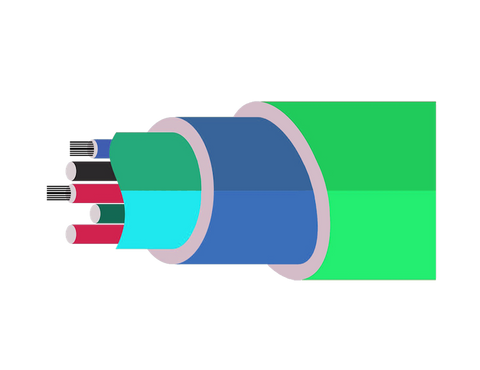News — cell phone booster
Network Functions Virtualization (NFV) for Mobile Carrier Networks
May 06, 2016
NFV is used when applications and services are deployed in a carrier network. Traditionally, network functions such as firewalls, routers, 4G baseband units, deep packet inspection and session border controllers were implemented with dedicated network appliances. Using many appliances has the following disadvantages: Many pieces of equipment need to be maintained. Expensive. Long deployment times. Required upfront capacity difficult to determine. NFV's aim is to solve these challenges by using software to implement network functions and then deploying them on common hardware. This eliminates the requirement for specialized appliances, similar to how smartphones replaced a number of specialized devices including...
Hybrid Fiber Coax (HFC) Cables for Multi-System Operators (MSO)
May 05, 2016
HFC is used by multi-system operators (MSO) and cable operators as a service delivery architecture. It uses coaxial and fiber optic cabling to distribute voice content, data and video to and from the headend and subscribers. Signals are typically sent from the headend via a hub to within a mile of the final destination using a fiber optic cable. For a service area that ranges from 64 homes to 1,000 subscribers, the fiber optic cable is terminated in an HFC node. Optical signals are then converted to radio frequency (RF) signals and transmitted via coaxial cable to subscriber's businesses or...
Silicon Photonics (SiPh) and Integrated Photonics (InPh)
May 04, 2016
SiPh involves data that is transferred between computer chips by using optical rays. Although this might sound simple, it can be difficult to understand. It might therefore help to compare it to electrical circuits. The first electrical circuits used discrete components e.g. resistors, capacitors and transistors that were interconnected with tracks on a printed circuit board. Discrete components were later formed adjacently on a single silicon substrate and interconnected to reduce cost and size. This was the start of integrated circuits (ICs or chips). The type of components that could be manufactured this way expanded while their power consumption and size...
Wavelength Division Multiplexing (WDM) Increases Network Capacity
May 03, 2016
WDM is a method of separating or combining multiple wavelengths out of or into a single fiber strand with each wavelength carrying a different signal. Using optical filters lets a certain range of wavelengths pass through, while another range is allowed. Thin-film filter technology (TFF) is often used to achieve this effect. Multiple thin layers are stacked and interference effects are created by sequential reflections on the interface between the layers. This lets light reflect for certain wavelengths and pass through for others. The capacity of a network can be increased cost effectively by using WDM. Two types of WDM...
Internal Smart Bias Tee Capability of Base Station Antennas
May 02, 2016
Remote electrical tilt (RET) is a base station antenna capability that enables RET operators to alter the direction of their antenna beams remotely. This allows them to adjust their networks without having to move the antennas physically or climb up a cell tower. It is done using electrical equipment, and standards have been established by the Antenna Interface Standard Group (AISG). An AISG controller is connected to antenna line devices (ALDs) with a smart bias tee and the signal is transmitted up the tower using the feeder line. Normally, the AISG controller is located near or at the base station. It...





